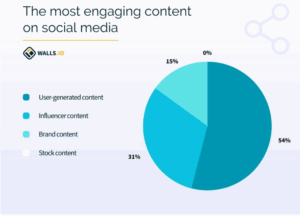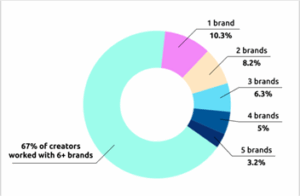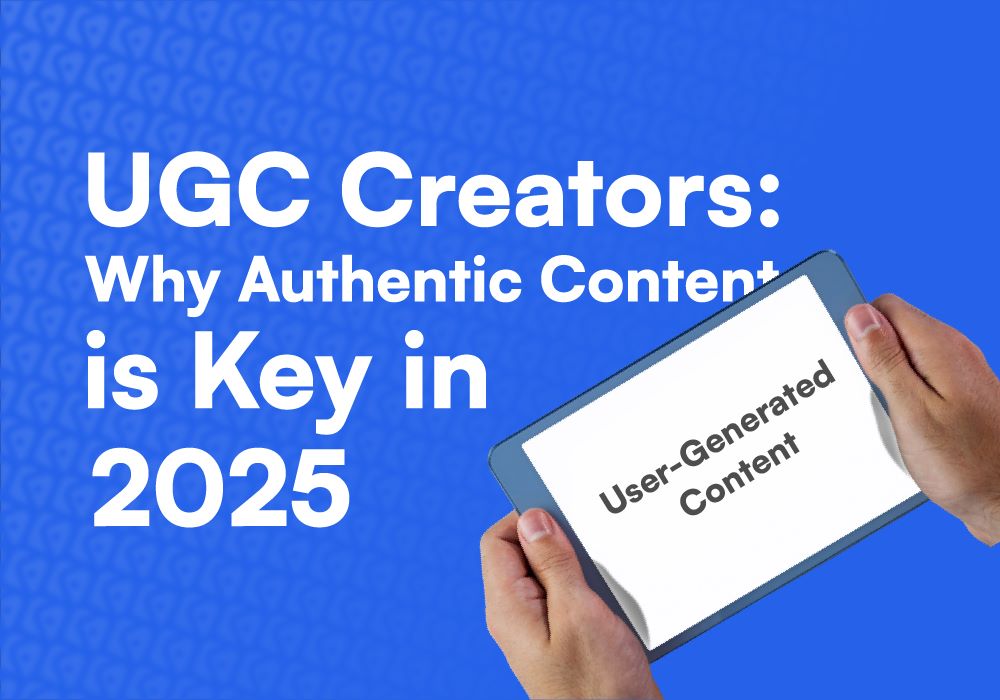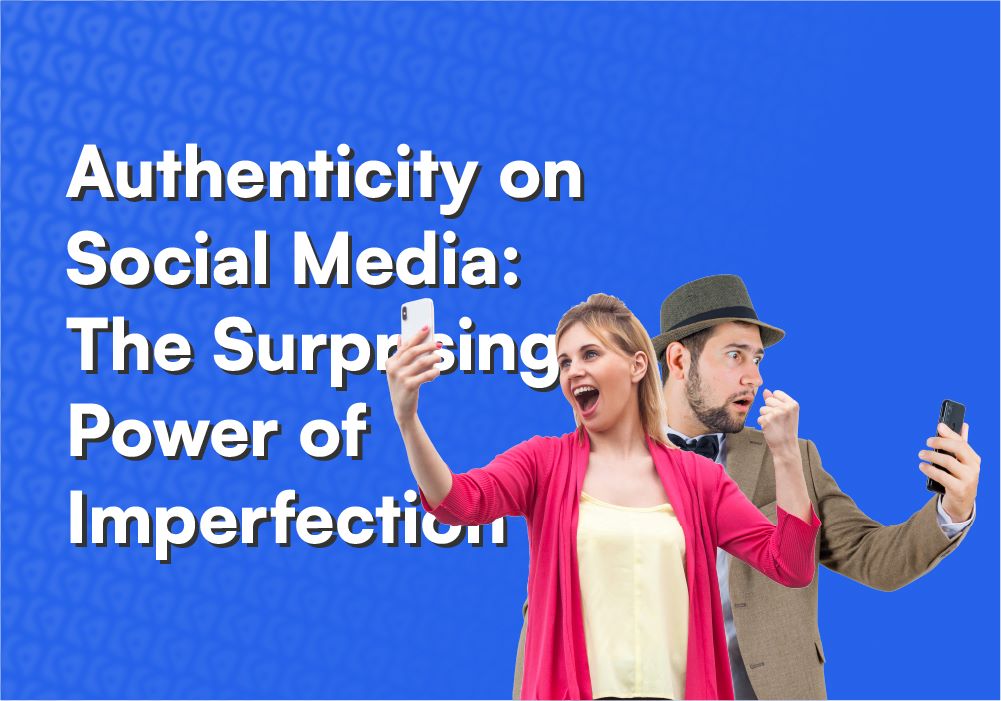Why UGC Creators Are Especially Relevant Right Now
To demonstrate the growing relevance of UGC Creators, let’s take a closer look at recent studies.
Crisis of Trust in Traditional Influencers
Lack of Credibility in Product Recommendations by Influencers
According to a study conducted by Medienanstalten (dated August 29, 2024), 50% of respondents consider advertising on social media to be less favorable than on platforms like TV, radio, or podcasts. In particular, ads by influencers are viewed critically—55% of those surveyed express disapproval, especially among older demographics. Many perceive a lack of transparency, and product recommendations or reviews by influencers are not generally seen as credible.
Source: Medienanstalten
Growing Interest in User-Generated Content
According a study by Whop titled “UGC Creator Statistics”, the number of UGC Creators increased by 93% between 2024 and 2025. The market share of UGC also grew: 15% of all social media collaborations were UGC campaigns. Between 2020 and 2025, interest in becoming a UGC Creator rose by over 8,700%. Similarly, overall interest in UGC increased by 564%, while interest in UGC marketing rose by 275%.
Another study from 2023 showed that TikTok was the most used platform among UGC Creators, with 54%. Instagram followed with 42%. More than 67% of creators published UGC on their own channels, while 13% did not.
Source: Whop
UGC Creators in 2025 Marketing – Authenticity Over Follower Count
While traditional influencers focus on expanding their audience, UGC Creators prioritize content over community size. That’s why their content always comes across to users as authentic, natural, and credible. This gives brands and entrepreneurs real potential for building brand identity and relatability. Here, authenticity plays a vital role – without trust, there’s no chance on social media.
Authenticity Over Follower Count
According to Forbes Forbes, 90% of consumers place a high value on authenticity when deciding which brands to support (Source: Forbes). Posts that feel real (i.e., authentic) not only boost trust, but also form the foundation for long-term loyalty. As a result, brands and influencers seem less like sellers and more like genuine personalities.
Source: Forbes
Want to learn more about authenticity? Click on “Authenticity on Social Media”
UGC – Authenticity as a New Benchmark for Brand Success
According to a study by CreatorLabz (dated December 6, 2024), the impact of user-generated content (UGC) is undeniable impact of user-generated content (UGC). More and more brands are relying on authentic content from real customers to increase engagement and foster brand loyalty. Here are some compelling statistics that highlight the significance of UGC:
- Trust and Authenticity:
- 84% of consumers say they trust online reviews and recommendations from real people more than branded content.
- 79% report that user-generated content strongly influences their purchasing decisions — making it a major driver of revenue.
- UGC-based ads generate four times higher click-through rates than traditional ads.
- Engagement and Reach:
- Brands that integrate UGC into their social media strategy see a 28% higher engagement rate.
- Visual UGC — such as customer photos or videos — leads to 50% more interaction on social platforms.
- UGC on product pages can increase interaction rates by up to 200%.
These numbers show that UGC not only builds trust but also significantly increases engagement. Furthermore, UGC contributes directly to measurable business success and has become an indispensable part of modern marketing strategies.
Source: CreatorLabz
Statistics on User-Generated Content in Social Media
Social media offers brands tremendous opportunities to connect with their audiences. Here’s an overview of the most engaging content types on social platforms:

The following pie chart, provided by Walls.io illustrates the share of user-generated content on social media compared to influencer content, brand-generated content, and stock content. The figures are given in percentages.
User-generated content leads the ranking as the most engaging content type — confirmed by 54% of marketers surveyed. 31% of experts stated that influencer content most effectively grabs the attention of social media users. Brand-generated content ranks third in terms of engagement — 15% of marketers say users find it appealing. These findings also show that stock content — i.e., pre-produced images or videos — achieves 0% engagement.
Social media users are increasingly seeking original and personalized content, making stock material less attractive in the fast-paced and dynamic social media landscape.
How Many Brands Creators Worked With?

The following pie chart, provided by Influencer Marketing Hub, shows the percentage of brands that UGC Creators have collaborated with throughout their UGC careers. According to the survey, 67% of creators have worked with more than six brands.
This suggests that creators either aim to build a diverse portfolio or that brands tend not to collaborate with the same creators repeatedly. Only 107 of the creators surveyed had worked with just one brand, representing 10.3% of the sample.
UGC Creators vs. Micro-Influencers – Differences in Application Areas
Here, we explore whether UGC Creators and micro-influencers act as competitors or complements in their respective areas of use.
The differences between UGC Creators and micro-influencers mainly lie in how and where they are applied:
Micro-influencers, for example, often explain the use and functionality of a product in their posts or share personal, real-life experiences with it. This makes them appear authentic and credible. Their typical use cases include niche products, regional campaigns, and building brand trust through their perceived honesty.
The areas of application for UGC Creators, on the other hand, include:
Content Marketing – where brands share positive UGC to enhance credibility and authenticity.
Product Advertising – where brands hire UGC Creators for campaigns tailored to specific target audiences, resulting in greater reach.
Community Building – where brands use UGC to foster online communities by allowing users to shape the brand through reviews and recommendations.
For these reasons, it’s clear that the two groups fulfill different roles within the marketing mix and therefore complement each other strategically.
UGC and AI – One of the Top Trends in User-Generated Content for 2025
AI-Supported UGC Production
As brands continue to rely on UGC, new trends are emerging that have the potential to further increase its impact. One major development is the use of AI-powered tools for curating, tagging, and optimizing UGC. By leveraging artificial intelligence, brands can identify high-performing content, automate curation, and even analyze sentiment to reach audiences more effectively.
Conclusion – UGC Creators as the Next Evolution of Influencer Marketing
The days when follower count alone determined a brand’s success are over. UGC Creators are bringing back what social media so urgently needs today: real connection, honest experiences, and authentic content.
Brands that recognize the value of user-generated content are investing not just in visibility, but in trust and long-term customer relationships. Whether it’s product campaigns, community building, or brand positioning — UGC Creators are setting new standards. Anyone looking to succeed in digital marketing in 2025 simply can’t ignore them.


